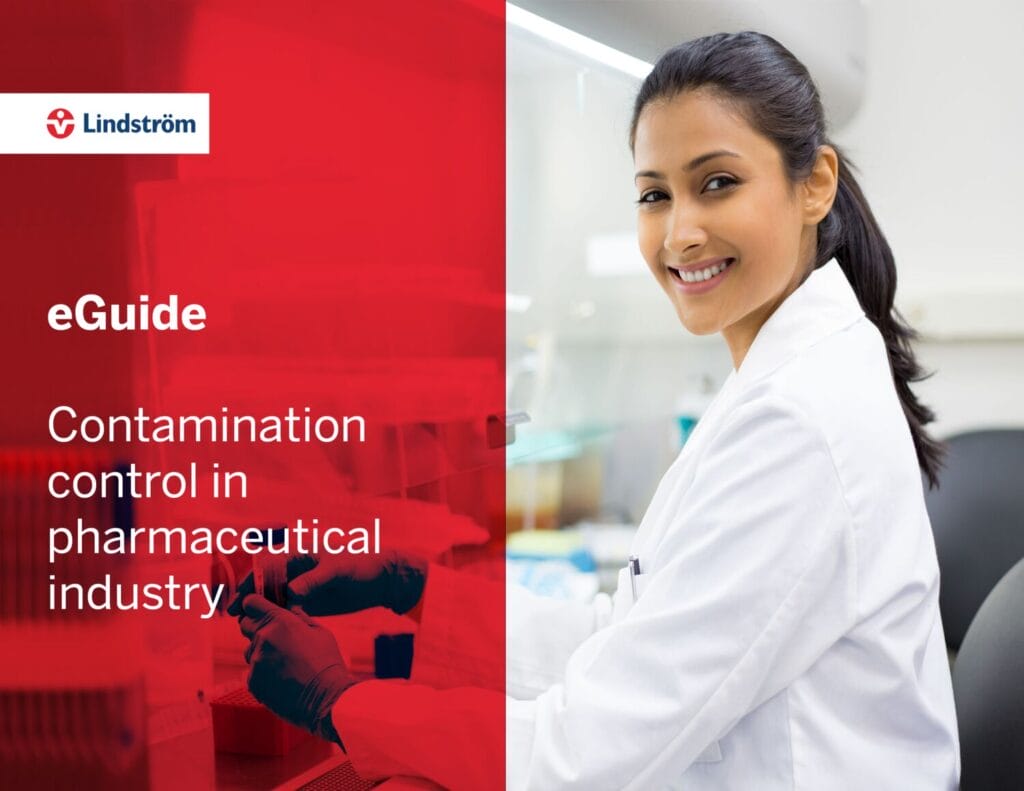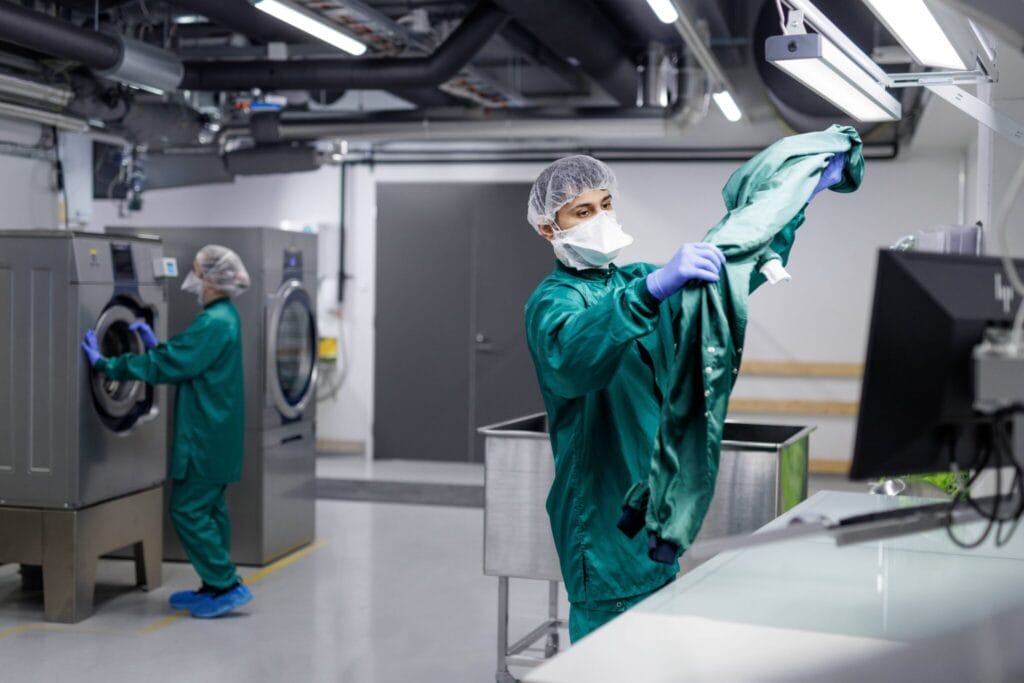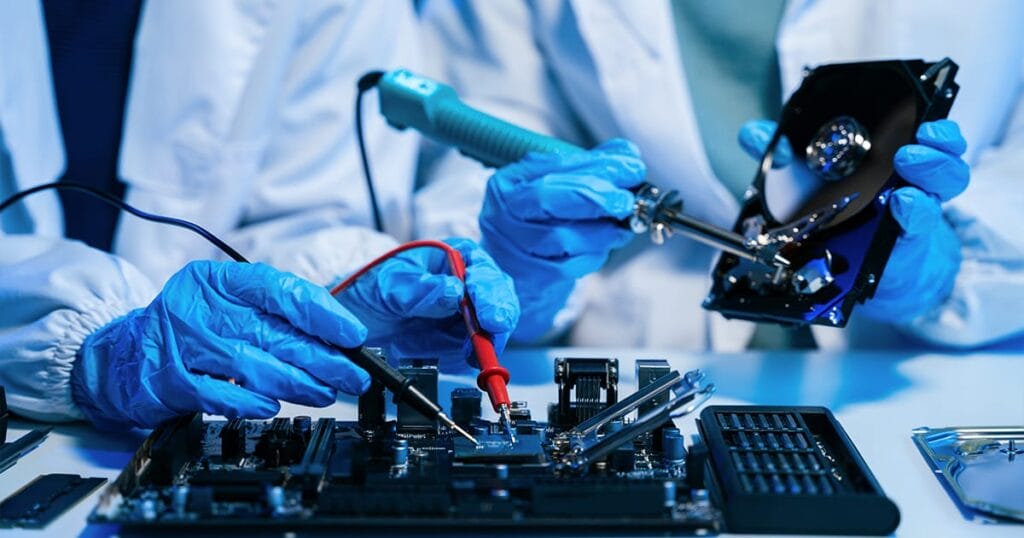
What is contamination control in cleanrooms?
Contamination control in cleanrooms is the foundation of product quality and compliance. Cleanrooms are controlled environments where airborne particles, microbes, and other contaminants must be kept at very low levels. In industries such as pharmaceuticals, biotechnology, electronics, and aerospace, even microscopic contaminants can lead to defective products, safety risks, or failed audits.
Contamination control protects your entire operation: from manufacturing outcomes to your company’s reputation. To do this effectively, a combination of engineering controls, behavioural practices, validated equipment, and hygiene protocols must be in place.
What are the common sources of contamination in cleanrooms?
The importance of contamination control goes beyond daily operations. It plays a crucial role in meeting the expectations of regulatory authorities such as:
- ISO 14644, which defines cleanroom classification and particle count limits
- EU GMP Annex 1, which focuses on sterile manufacturing
- FDA regulations, which hold manufacturers responsible for ensuring their environments prevent contamination
By maintaining strict control over cleanroom environments, companies can avoid costly production errors, reduce batch failures, and ensure product safety.
What causes contamination in cleanrooms?
The majority of contamination in cleanrooms comes from people. Human skin, hair, and clothing fibres continuously shed particles and carry microbes even when we feel clean.
Common sources include:
- Inadequate or incorrect gowning
- Improper behaviour in the cleanroom (talking, fast movement)
- Damaged or unclean garments
- Unfiltered or disrupted airflow
- Particle-generating equipment
- Ineffective cleaning or sanitisation
Contamination can be introduced through air, surfaces, tools, or improperly managed garments. It only takes one small slip for sterility to be compromised.
How cleanrooms are monitored
Monitoring is how cleanrooms stay in control. Regular testing ensures the environment is performing as intended and alerts operators to any changes before they become serious problems.
Methods include:
- Particle counters – These devices measure the number and size of airborne particles in real time.
- Microbial air sampling – Collects airborne microorganisms to assess biocontamination risk.
- Surface contact plates – Pressed against cleanroom surfaces to detect microbial contamination.
- Environmental mapping – Establishes baseline contamination levels and tracks trends over time.
Monitoring results are used to guide cleaning schedules, staff behaviour, and equipment maintenance.
What strategies are used for success?
Managing contamination requires consistency, vigilance, and structure. There is no single solution, but a combination of practices working together that keeps a cleanroom in control.
Key contamination control strategies:
1. Gowning protocols
Cleanroom clothing acts as a barrier between people and the clean environment. This includes coveralls, masks, gloves, boots, and hoods, all donned in a strict sequence. The garments must be made of materials that retain particles and be maintained in a contamination-free state.
2. HEPA filtration systems
HEPA (High-Efficiency Particulate Air) filters are critical for maintaining cleanroom air. They trap particles down to 0.3 microns with an efficiency of at least 99.97%, ensuring clean airflow.
3. Validated cleaning routines
Daily, weekly, and monthly cleaning schedules using appropriate disinfectants are essential. Surfaces, floors, and equipment must be cleaned without introducing more contaminants in the process.
4. Zoning and facility design
Cleanrooms are often divided into zones of increasing cleanliness. Airlocks, pass-throughs, and unidirectional workflows help prevent cross-contamination.
5. Training and behaviour control
Everyone in the cleanroom needs to understand their role in contamination control. Routine training ensures gowning, hygiene, and behaviour are always aligned with the protocol.
How does Lindström contribute to contamination control?
Lindström supports contamination control in cleanrooms through a fully managed cleanroom garment service that aligns with industry standards and customer-specific hygiene requirements. Rather than simply supplying garments, Lindström delivers a comprehensive solution designed to strengthen your overall contamination control strategy. This includes providing validated garments suitable for ISO Class 5–8 environments, ensuring that clothing used within cleanrooms meets the required particle and microbial retention standards.
Each garment is laundered in ISO-classified facilities that operate in compliance with EN 14065, a key standard for biocontamination control in textile processing. RFID technology is used to track every garment throughout its lifecycle, helping you monitor usage, replacement schedules, and ensure garments never exceed their validated use limits. Lindström also supports customers with training, SOP development, and audit preparation. With modular laundry sites located near key industrial regions, garment handling is streamlined and contamination risks during transport are reduced—giving you a reliable, traceable, and compliant solution tailored for controlled environments.
What are the challenges in maintaining contamination control?
Despite the best systems, contamination control is not without its difficulties.
- Human variability – Fatigue, misunderstanding, or complacency can lead to mistakes. Even minor protocol drift can have serious consequences.
- Complex supply chains – Materials, tools, and garments move through many hands and spaces before entering the cleanroom.
- Evolving standards – Regulatory expectations (like those in the revised Annex 1) are becoming more stringent, demanding continuous adaptation.
- Technology investment – Keeping systems up to date with modern monitoring and filtration technologies requires planning and resources.
Overcoming these challenges requires a proactive approach. This means regular audits, ongoing training, and working with partners who understand the landscape.
Contamination control in cleanrooms is a long-term commitment, not a one-time achievement. It demands discipline, data, and dedication to detail. With so many potential sources of contamination, it’s critical that your systems work together to maintain control.
Lindström helps you stay ahead of risks by providing expertly managed cleanroom garment services that support hygiene, traceability, and compliance, without burdening your team.




